|
Page < 1 2 3 4 5 6 7 8 9 10 11 12 13 14 15 16 17 18 19 20 21 22 23 24 25 >
Show
in alphabetical order
121. W.
Somerset Maugham
(1874-1965) was born in the British Embassy in Paris and was educated in
England and Germany. After medical school, a successful attempt at writing led
him to widespread fame for his plays and novels. Author of several books
including "Of Human Bondage" and " The Moon and Sixpence."
 When
Maugham arrived in India in 1938, he was hoping to find some inspiration for a novel
he planned to write incorporating Hindu philosophy. Arriving in Chennai, he met
Ramana Maharshi. This meeting inspired him to write his classic " The
Razor's Edge". He derived this title from a passage in the Katha-Upanishad
- (Kshurasya Dhara): When
Maugham arrived in India in 1938, he was hoping to find some inspiration for a novel
he planned to write incorporating Hindu philosophy. Arriving in Chennai, he met
Ramana Maharshi. This meeting inspired him to write his classic " The
Razor's Edge". He derived this title from a passage in the Katha-Upanishad
- (Kshurasya Dhara):
" Like the sharp edge of a razor, the sages say, is the path, Narrow it is,
and difficult to tread."
His book Razor's
Edge reveals his clear
grasp of Hindu philosophy. The main character of the book seeks in the end
relief in India from the horrors of war and gains a sense of being at one with
the Absolute, through the Indian philosophical system known as Vedanta.
(Two movies and more than six editions of the book have appeared since 1944,
with sales in the millions of copies.)
(source:
1940
Vedantic Novel Still a Hit - Hinduism Today - July/August 2000 p 54-57).
The greatest English
novelist Maugham, advises prospective
writers to come to India for knowledge of the higher values of life.
(source:
The
Vision of India - By Sisirkumar Mitra p.
209).
122. Marcus
Leatherdale Montreal born photojournalist has
had a long love affair with India. To him Hinduism and India are almost
synonymous. What he likes about Hinduism is that its very emotional, colorful
and joyful. Leatherdale
notes:
The photojournalist Marcus
Leatherdale has also had a long love affair with India. For many years he rented
a house in Benares, spending half the year there on the bustling ghats, making
friends with Brahmins and boatmen alike. He speaks some Hindi and calls himself
an 'adha' Hindustani. He has shot images of maharanis and circus performers and
ordinary Indians. His current focus is on the tribal folks who are an almost
endangered species in India.
"You'd have to be brain dead to live in India and not be affected by
Hinduism. It's not like Christianity in America, where you feel it only on
Sunday mornings … if you go to church at all. Hinduism is an on-going daily
procedure. You live it, you breathe it."
(source: Westerners
who have succumbed to India' legendary charm - By Lavina
Melwani - littleindia.com).
"Hinduism has a playful aspect which I've not experienced in any other
religion. Its not so righteous or sober as is Christianity, nor is it
puritanical. That's one of the reasons I enjoy India. I wake up in the morning,
and I'm very content."
(source: The
timeless portraits of Marcus Leatherdale - By
Lavina Melwani
- Hinduism Today March 1977).
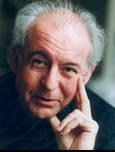 123. Roger-Pol Droit (
) French philosopher, and Le
Monde journalist, recently wrote in his book L'oubli
de l'Inde. Une amnésie philosophique - "The
Forgetfulness of India, that: 123. Roger-Pol Droit (
) French philosopher, and Le
Monde journalist, recently wrote in his book L'oubli
de l'Inde. Une amnésie philosophique - "The
Forgetfulness of India, that:
"The Greeks loved so much Indian
philosophy that Demetrios Galianos
had even translated the Bhagavad-Gita". There is absolutely not a shadow of
a doubt that the Greeks knew all about Indian philosophy."
(source: Arise
O'India - By Francois Gautier
ISBN 81-241-0518-9 Har-Anand Publications 2000 p. 22).
124.
Herman Melville (1819-1891) was the great American
novelist, and author of
Moby
Dick.or The
Whale. Melville’s references to Hindu myth
and thought, however, peripheral to his works some have thought them to be, are
so numerous that there can be no doubt about his extensive knowledge of
Hinduism.
That Melville should give a
fairly detailed description of the story of Vishnu in
two places is itself an indication that he did not intend it to be read and
forgotten. While trying to present the “true form of this whale,” he adverts
to those “curious imaginary portraits of him” and describes the Hindu whale
as the most ancient portrait available in the world:
 “Now, by all odds, the most
ancient extant portrait anyways purporting to the whale’s is to be found in
the famous cavern pagoda of Elephanta, in India. …The Hindoo whale referred
to, occurs in a separate department of the wall, depicting the incarnation of
Vishnu in the form of leviathan, learnedly known as the Matse-Avatar.” “Now, by all odds, the most
ancient extant portrait anyways purporting to the whale’s is to be found in
the famous cavern pagoda of Elephanta, in India. …The Hindoo whale referred
to, occurs in a separate department of the wall, depicting the incarnation of
Vishnu in the form of leviathan, learnedly known as the Matse-Avatar.”
In addition to this reference
to the portrait of the Hindu leviathan at Elephanta, Melville mentions the
context in which Vishnu incarnates himself as a fish and relates him to the
whaleman’s fraternity:
“That
wondrous oriental story is now to be rehearsed from the Sashras which gives us
the dread Vishnoo, one of the three persons in the godhead of the Hindoos; gives
us this divine Vishnoo himself for our Lord: - Vishnoo, who, by the first of his
ten earthly incarnations, has forever set apart and sanctified the whale. When
Brahma, or the God of Gods, saith the Shaster, resolved to recreate the world
after one of its periodical dissolutions, he gave birth to Vishnoo, to preside
over the work; but the Vedas, or mystical books, whose perusal would seem to
have been indispensable to Vishnoo before beginning the creation, and which
therefore must have contained something in the shape of practical hints to young
architects, these Vedas were lying at the bottom of the waters; so Vishnu became
incarnate in a whale, and sounding down in him to the utter-most depths, rescued
the sacred volumes. Was not this Vishnoo a whaleman, then? Even as a man who
rides a horse called a horseman?”
(source: Moby
Dick: A Hindu Avatar, a Study of Hindu Myth and Thought in Moby-Dick - By H.
B. Kulkarni p. 1-6).
125. Jean-Sylvain
Bailly (1736–93)
18th century French astronomer and politician. His works on astronomy and on the
history of science (notably the
Essai sur la théorie des satellites de
Jupiter) were distinguished both for scientific interest and literary
elegance and earned him membership in the French Academy, the Academy of
Sciences, and the Academy of Inscriptions.
Jean-Sylvain
Bailly
said:
 "The motion of the
stars calculated by the Hindus before some 4500 years vary not even
a single minute from the tables of Cassine and Meyer (used in the
19-th century). The Indian tables give the same annual variation of
the moon as the discovered by Tycho Brahe - a variation unknown to
the school of Alexandria and also to the Arabs who followed the
calculations of the school... "The Hindu systems
of astronomy are by far the oldest and that from which the Egyptians, Greek,
Romans and - even the Jews
derived from the Hindus their knowledge." "The motion of the
stars calculated by the Hindus before some 4500 years vary not even
a single minute from the tables of Cassine and Meyer (used in the
19-th century). The Indian tables give the same annual variation of
the moon as the discovered by Tycho Brahe - a variation unknown to
the school of Alexandria and also to the Arabs who followed the
calculations of the school... "The Hindu systems
of astronomy are by far the oldest and that from which the Egyptians, Greek,
Romans and - even the Jews
derived from the Hindus their knowledge."
(source: The Politics of
History - By N. S. Rajaram Voice of India ISBN 81-85990-28-X. 1995 p.
47).
126. R. Gordon Milburn
( ) claims that:
"Christianity in India needs the Vedanta...as constituting what might be called
an Ethnic Old Testament " in
Christian Vedantism - Indian Interpreter
1913.
(source:
Christian Vedantism - Indian Interpreter
- 1913).
 127.
Rene Guenon
(1886-1951) better known in Egypt as Sheikh
'Abd Al Wahid Yahya. But at the age of 21 he
was already in Paris, when he came in contact with the Advaita Vedanta school.
By the time he was nearly 30, his phenomenal intelligence had enabled him to see
exactly what was wrong with the modern West. 127.
Rene Guenon
(1886-1951) better known in Egypt as Sheikh
'Abd Al Wahid Yahya. But at the age of 21 he
was already in Paris, when he came in contact with the Advaita Vedanta school.
By the time he was nearly 30, his phenomenal intelligence had enabled him to see
exactly what was wrong with the modern West.
He was one of the
best-known European traditionalist authors on various civilizations, writes in
his book Introduction to the Study of the Hindu Doctrines
says:
" In India, we are in the presence of
a tradition which is purely metaphysical in its
essence.....A fact which stands
out much more clearly here than in the Semitic tradition, chiefly owing to the
absence of the religious point of view,....is the complete subordination of the
various particular orders relatively to metaphysics, that is to say relatively
to the realm of universal principles."
(source: Introduction to the Study of the Hindu Doctrines
- by Rene
Guenon p.
90 - 91).
 128. Hans Torwesten
(1944 - ) a native of Germany, studied art in Vienna and Indian philosophy,
meditation, and yoga in England. A writer, lecturer, yoga teacher, and painter,
he now lives in Austria. In his book
Vedanta
- Heart of Hinduism
he writes: 128. Hans Torwesten
(1944 - ) a native of Germany, studied art in Vienna and Indian philosophy,
meditation, and yoga in England. A writer, lecturer, yoga teacher, and painter,
he now lives in Austria. In his book
Vedanta
- Heart of Hinduism
he writes:
"A fair
number of leading physicists and biologists have found parallels between modern science
and Hindu ideas. In America, many writers such as J.
D. Salinger (An
Adventure in Vedanta: J.D. Salinger's the Glass Family),
Henry Miller, Aldous Huxley, Gerald Heard, and Christopher Isherwood, were in contact with the
Vedanta. Most of them came from elevated intellectual circles which rejected the
dogmatism of the Christian Churches yet longed for spirituality and satisfactory answers
to the fundamental questions of existence. In Vedanta, they found a wide-open, universal,
and philosophically oriented religion where even the penetrating scientific mind could
find something to its taste".
"To the Hindu,
shruti is what cannot be thought up by the limited human intellect, but is of
God. It is what is forever valid, never changes, is not dependent on the limited
capacity for understanding of any one historical person. The Hindu for this
reason is proud not to need a historical founder. The founder and foundation of
the Vedas and the Upanishads is the Brahman itself, is what is indestructible
and timeless."
"The
Upanishads are indeed thoroughly suffused with the spirit of
transcendence."
(source:
Vedanta
- Heart of Hinduism - by
Hans Torwesten
p. 23 29 and 214).
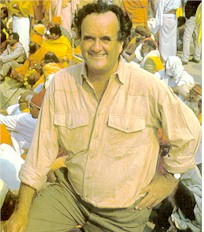 129.
Mark Tully
(?) former BBC correspondent in India, author of several books, including
No
Full Stops in India and The
Heart of India,
said: 129.
Mark Tully
(?) former BBC correspondent in India, author of several books, including
No
Full Stops in India and The
Heart of India,
said:
But I do profoundly
believe that India needs to be able to say with pride, "Yes, our
civilization has a Hindu base to it."
"The genius of Hinduism, and the very reason of its survival for so
long, was that it does not stand up and fight."
It changes and adapts and modernizes and its
absorbs and that is the scientific and proper way of going about it as
well."
" Why is Christianity in so
much trouble at the moment? Because it is so difficult for it to adapt,"
says the celebrated television journalist.
Saying that Hinduism would prove to
be the religion of the next Millennium."
So
you have the resources in Hinduism, you have the teachings, you have the history
that shows you can do it. You can revive your religion in such a way that it
does not become confrontational (which is a common practice) but does something
unique by becoming adaptive and adapting itself to the needs of the time. India
must be able to be proud of Hinduism. "The Kumbh Mela could
only take place in India.
In no other country would millions and millions of pilgrims, driven just by
faith that the sins of this life and previous lives would be washed away by
bathing in the confluence of two rivers at an auspicious time, brave severe
hardships, some walking barefooted, to get to bathe. Where
else would you find hundreds of holy men willing to march naked in processions
through the crowds of pilgrims, or one thousand Brahmins sitting around a
hundred sacred fires offering a sacrifice for world peace?" At
what gathering of one religion would you find such a variety of teaching, such
an acceptance that there are many ways to God?"
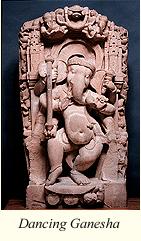 (source: cnn.com
and A
Hindu cure for the "colonial hangover" - By Mark Tully -
hinduismtoday.com). (source: cnn.com
and A
Hindu cure for the "colonial hangover" - By Mark Tully -
hinduismtoday.com).
Addressing the National Hindu Students Forum in
Britain in August, 1997, he expressed the view that Indian
civilization has a Hindu base to it and that Hindus should proclaim their
identity with pride.
(source: Knighthood
at last for the ‘Voice of India' - Tribune India 1/6/02).
"It
was the promotion of the ancient
Indian tradition of religious tolerance,
a tolerance which owes so much to Hinduism’s own pluralism...This tradition
provides a basis for Hindus and for Indians who believe in many of the many
other religions of this country to live with self-respect, in peace, and proud
of their national identity. This is very much an Indian tradition, a tradition
which is very different too from the tradition of countries where Semitic
religions like Christianity and Islam have dominated. It is the tradition which
could meet the needs of so many other countries in the world"
(source: Opposites
distract - By
Mark Tully - hindustantimes.com).
Mark Tully
has spoken in defense of the caste system and denounced
the spread of consumerism in the subcontinent. The BBC pushed him out
because of his excessive identification with Indian culture.
(source: India
Inscribed: European and British Writing on India 1600-1800 - By
Kate Teltscher introduction page).
130. Betty
Heimann
late professor of Sanskrit
and Indian philosophy at Ceylon University,
"It is an undeniable fact that no philosophy outside India makes such a
varied and manifold use of [spiritual] instruction in order to visualize the
supreme Truth. It is the very metaphysical bent of Hindu thought which makes
room for practical educational training."

Jaipur bazaar
in Rajasthan, India.
***
 131. Dale
M Riepe (1918 - ) was Professor Emeritus of
Philosophy at The State University of New York at Buffalo and he says in his book The
Philosophy of India and its impact on American Thought 131. Dale
M Riepe (1918 - ) was Professor Emeritus of
Philosophy at The State University of New York at Buffalo and he says in his book The
Philosophy of India and its impact on American Thought
"If the
American empire meets with the fate of the British, if Americans cannot resolve
their life-and-death struggle with the intelligent use of technology, if the
alienation in American society cannot be alleviated, then a new attitude may
gradually replace the 300 years reign of optimism. Such eventualities may lead
to more philosophers turning to contemplation, meditation and increased poring
over the Hindu and
Buddhist scriptures."
"Western thinkers, through their
study of Indian philosophies and religions have "discovered a new technical
philosophy of undreamed-of complexity and ingenuity" and this contact has
expanded the imagination, increased the number of categories, made possible new
studies in the history of logic, revealed new sensations and has driven the mind
back to its origin and out of its possibilities."
(source: The
Philosophy of India and its impact on American Thought
- By Dale
M Riepe p. 275).
 132.
Clarence
Edward Dutton
(1841-1912) a captain of
ordinance in the U.S. army, geologist-poet and a
Yale man, Dutton was deeply
influenced by the philosophies of India. 132.
Clarence
Edward Dutton
(1841-1912) a captain of
ordinance in the U.S. army, geologist-poet and a
Yale man, Dutton was deeply
influenced by the philosophies of India.
It was Dutton who likened the
snow-covered peaks of the canyon walls to the Hindu gods, Brahma, Vishnu and
Shiva. There is even a Hindu amphitheatre which Dutton likened to the
"profusion and richness which suggests an Oriental character.
It
would certainly not be inaccurate to suggest that Dutton must have been drawn by
the Himalayan symbolism of Vedic philosophy to have named the finest butte of
the Kaibab division the
Vishnu
Temple
and the grandest of all buttes as the
Shiva
Temple. For in Hindu philosophy Vishnu is attributed the aspects of preserving
the world and to Shiva the aspect also of the destroyer.
On the
7,650-foot Shiva Temple he wrote:
"The Shiva Temple the grandest of all, and most majestic in aspect....All
round it are side gorges sunk to a depth nearly as profound as that of the main
channel...In such a stupendous scene of wreck, it seemed as if the fabled
'destroyer' might find an abode not wholly uncongenial." he observed.
Dutton describes the
magnificence of what he sees of the Eastern Cloisters and Shiva's
Temple
as follows:
"As we contemplate
these objects we find it quite impossible to realize their magnitude. Not only
are we deceived, but we are conscious that we are deceived, and yet we can not
conquer the deception.....The eastern Cloister’s is nearer than the western,
its distance being about a mile and a half. It seems incredible that it can be
so much as one-third that distance. Its altitude is from 3500 to 4000 feet, but
any attempt to estimate the altitude by means of usual impressions is felt at
once to be hopeless. There is not stadium. Dimensions mean nothing to the
senses, and all that we are conscious of in this respect is a troubled scene of
immensity."
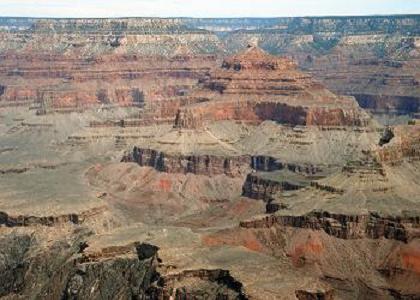
Shiva temple -
"The Shiva Temple the grandest of all, and most majestic in aspect."
***
"Beyond the eastern
Cloisters, five or six miles distant, rises a gigantic mass which we named ‘Shiva’s
Temple
’. It is the grandest of all the buttes, and the most
majestic in aspect, though not the most ornate. Its mass is as great as the
mountainous part of
Mount Washington
. That summit looks down 6,000 feet into the dark depths of the inner abyss,
over a succession of ledges as impracticable as the face of
Bunker Hill
Monument
. All around it are side gorges sunk to a depth nearly as profound as that of
the main channel. It stands in the midst of a great throng of cloister-like
buttes, with the same noble profiles and strong lineaments as those immediately
before us, with a plixus of awful chasms between them. In such a stupendous
scene of wreck it seemed as if the fabled ‘Destroyer’ might find an abode
not wholly uncongenial."
He was particularly
in awe of a 7,529-foot butte. 'It is a gigantic butte,' he wrote in 1860. 'So
admirably designed and so exquisitely decorated that the sight of it must call
forth an expression of wonder and delight from the most apathetic beholder. Such
a magnificent nature-made spire needed a timeless name."
He called it the Vishnu
Temple.
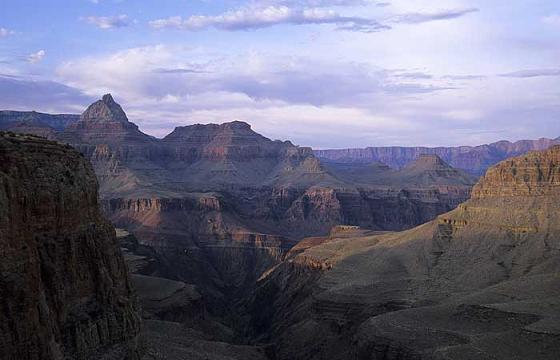
The Vishnu temple: t is a gigantic butte,' he wrote in 1860. 'So
admirably designed and so exquisitely decorated that the sight of it must call
forth an expression of wonder and delight from the most apathetic beholder. Such
a magnificent nature-made spire needed a timeless name."
(image source: daveshowalter.com).
***
In describing the panorama
from Point Sublime he writes:
"The finest butte of
the chasm is situated near the upper end of the Kaibab division; but it is not
visible from Point Sublime. It is more than 5,000 feet high, and has a
surprising resemblance to an Oriental pagoda. We named it Vishnu’s
Temple
."
Dutton went on to
name other buttes with such names as Brahma Temple, (7,553 feet), Deva Temple
(7,339). "Vishnu Schist" is the oldest geological formation
exposed at the Canyon's bottom. "Hindu Amphitheatre" is seen by hiking
into the gorge. It reminded Dutton of a "profusion and richness which
suggests an oriental character."
He
records that the Hindoo Amphitheatre is
eroded back from the river a distance of about ten miles.
Dutton seems
to be familiar with the great carvings and sculptures of Ellora
or Ellore, in
India
and so must be the intellectuals of his time for him to draw confident
analogies in describing The Transept.
. The details of their sculpture are very beautiful and thoroughly systematic,
and every characteristic is sustained throughout their whole extent. The entire
length of the chamber is seen perspective. Beyond its opening we see the
grandeur of the central canyon with butte beyond butte, and the vast southern
wall of the main chasm in the background fifteen miles away. To many spectators
the dominant thought here might be that this stupendous work has been
accomplished by some intelligence akin to the human rather than by the blind
forces of nature. Everything is apparently planned and cut with as much
definiteness of design as a rock-temple of Petraea or
Ellore."
According to Professor Stephen J. Payne, professor of history at the Arizona
State University and author of the book - How the Canyon Became Grand - there is
" no explicit explanation for naming the peaks after Hindu gods, only
implicit." He likens the naming the peaks to the historical fact of the
time. "When there was a growing awareness and respect in the West,
particularly Europe, towards Indian philosophies, not economies of the
past."
(source: A
Journey of Discovery
and
Nature's
"Hindu Temples" On View at
Grand Canyon
- Hinduism Today August 1987).
133.
George Hendrick
( ? )
wrote in the Introduction to
reprint edition of Charles Wilkins Bhagavad Gita. He noted about the Bhagwad
Gita and its :
"antiquarian charm and historical importance."
(source: The
Universal Gita: Western Images of the Bhagavad Gita a Bicentenary Survey
- By Eric J. Sharpe
p. 4-5).
 134.
Charles Johnston ( ? ) a retired
English civil servant in Bengal and a Sanskrit scholar, brought forth a
translation in 1908 in Flushing, New York of the Bhagavad
Gita: "The Songs of the Master." Johnston paid tribute in
his lengthy General Introduction to the historical and eternal significance of
the scripture: 134.
Charles Johnston ( ? ) a retired
English civil servant in Bengal and a Sanskrit scholar, brought forth a
translation in 1908 in Flushing, New York of the Bhagavad
Gita: "The Songs of the Master." Johnston paid tribute in
his lengthy General Introduction to the historical and eternal significance of
the scripture:
"The
Bhagavad Gita is one of the noblest scriptures of India, one of the deepest
scriptures of the world. . . . a symbolic scripture, with many meanings,
containing many truths. . . . [that] forms the living heart of the Eastern
wisdom. "
(source:
Bhagavad Gita: "The Song Of the Master" -
By Charles Johnston, trans. (Flushing, New York: Charles Johnston,
1908, pp. vi-xvii).
135. Professor
Louis Renou (1896-1966) French Indologists, author of several books including Hinduism,
Civilization
in Ancient India, L'Inde
fondamentale. He wrote in 1962:
"Truth is for Hinduism an
indivisible treasure; spiritual immediacy is widely distributed, the mystic path
is open to everyone. In its purest forms, this religion
becomes a type of wisdom, that wisdom which impressed the ancient Greeks when
they visited India and which could be of some fruitfulness again for our blase
cultures. It is as wisdom that we should like to define Hinduism
rather than by the equivocal term spirituality."
(source: Hinduism
- By Louis Renou p. 56 - 57).
"The fact remains that Hinduism provides an incomparable field of
study for the historian of religion: its aberrations are many, but there is in
it a great stream of mystical power: it manifests all the conceptions of
religion, and its speculation is continually revealing them in a new light. It
combines powers of constant renewal with a firm conservancy of fundamental
tradition. In Bhakti and still more in Yoga, it has perfected unrivalled
technique of mystical initiation, that contrast strongly with the frequently
haphazard methods of spiritual training in the West. Above all, in the
interpenetration of religion and dharma in general and the reciprocal stimulus
of abstract thought and religious experiment, there is an underlying principle,
that, given favorable conditions, may well lead to a new integration of the
human personality."
(source:
Religions of Ancient
India - By Louis Renou
p. 110).
He writes: "For
almost everyone the Bhagavad-Gita
is the book par excellence."
(source: Readings in Vedic Literature
- By Satsvarupa dasa
Goswami
p. 38).
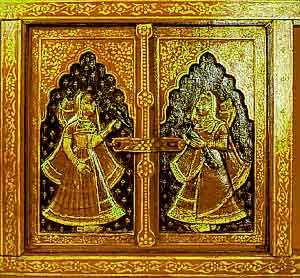 The well known Indologist and Sanskrit scholar at
the University of Paris, in the course of a talk at Santiniketan in January
1949, said that the best writers and thinkers of France had been influenced by
Indian thought and culture, and the intuitive sense of affinity between France
and Indian culture had developed into devotion. In another talk he said: The well known Indologist and Sanskrit scholar at
the University of Paris, in the course of a talk at Santiniketan in January
1949, said that the best writers and thinkers of France had been influenced by
Indian thought and culture, and the intuitive sense of affinity between France
and Indian culture had developed into devotion. In another talk he said:
"India has the good
fortune of being the repository of the noblest spiritual tradition, the only one
in the whole world which has been alive throughout the centuries. And Sanskrit
has been the privileged instrument of this tradition."
(source:
The
Vision of India - By Sisirkumar Mitra
p. 210-211).
"The importance of the Veda
to India is well known. Its imprint on Hinduism is permanent and unmistakable;
and on Buddhism and Jainism, too, it has left a deep impression, if only in the
reaction it produced in them. It seems likely that many Indian literary
disciplines would have developed quite differently if there had not originally
been that striking sequence of hymns, commentaries, descriptive aphorisms and
philosophoumena, which were drawn upon and imitated over a long a period. Vedism
is a religion, but it is even more a technique; a technique of learned poets and
erudite theologians, which has given rise to the most atheistic of the
philosophical systems of India. Vedism even developed the secular disciplines,
phonetics and grammar, astronomy, the rudiments of law, even geometry, because
its teaching made use of them.
"To the Indian mind, God is
'l'hypostase deficiente de l'Absolut', as M.
Olivier Lacombe (L'Absolu selon le Vedanta
- The Absolute according to Vedanta) has said. The world is usually envisaged as
an attribute of the divine. In short, the divine is both transcendent and
immanent...from early times it was said that the Supreme Being is silence."
"India in her exhaustion has
often taken refuge in ahimsa and the Vedantic scale of values; but a new and
more self-assertive generation may be at hand, a generation imbued with the
spirit of Yajnavalkaya." The Veda may once again become a great source of
inspiration, as it was to the fiery Dayananda Saraswati in the nineteenth
century, who set out to establish a mystique of national and social import based
on the Vedas."
(source:
Religions of Ancient
India - By Louis
Renou p. 42 - 69).
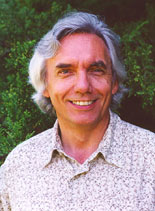 136.
Georg Feuerstein
is a specialist in the Sanskrit literature of
yoga and has written considerable number of articles on various aspects of
Indian thought. He has written various books including the Yoga
Tradition: Its History, Literature, Philosophy, and Practice and ' The
Introduction to the Bhagavad Gita: Its philosophy and Cultural Setting.
He observes: 136.
Georg Feuerstein
is a specialist in the Sanskrit literature of
yoga and has written considerable number of articles on various aspects of
Indian thought. He has written various books including the Yoga
Tradition: Its History, Literature, Philosophy, and Practice and ' The
Introduction to the Bhagavad Gita: Its philosophy and Cultural Setting.
He observes:
" From earliest times Indian man has shown a
distinct predilection for philosophical speculation about the nature of man and
the universe. Long before the rise of Greek thought, he grappled with the
profoundest problems of philosophy. By the time the Gita was complied,
philosophical enquiry had already reached a noteworthy degree of maturity,
complexity and coherence. The musings of the early Vedic seers had developed in
depth and breadth as well as in clarity and precision."
"The dry, academically
stilted approach of contemporary Indology, with little interest in the inner
meaning of its subject matter, becomes singularly apparent in the Gita, which is
brimming with significance."
(source: The
Introduction to the Bhagavad Gita: Its philosophy and Cultural Setting
p. 61 and 84- 85).
"India's spirituality is
undoubtedly the most versatile in the world. In fact, it is hard to think of any
metaphysical problem or solution that has not already been thought of by the
sages and pundits of ancient or medieval India."
"Our world, the sages of
ancient India tell us, is but a wonderfully bewitching collage of name (nama)
and form (rupa). In this they anticipated contemporary philosophy."
"God, is not
the Creator-God of deistic religions like Judaism, Islam, and Christianity.
Rather, God is the transcendental totality of existence, which in the
non-dualist schools of Hinduism is styled the Brahman,
"Absolute".
 "In a sense, Monoism justifies the emotional discord apparent in most of
its Occidental followers and rationalizes their self-centeredness. In the case
of India, this is the whole pan-en-theistic current of thought so beautifully
exemplified in the Gita, some Upanishads, the schools of Vaisnavism, the
Saktivada of the Hindu Tantras and in the remarkable South Indian system of
Saiva-Siddhanta. This proliferative movement was of cardinal importance in the
making of India. By acting as a counter-balance to the other-worldliness of the
monistic trends, it literally prevented the Indian culture from total
self-extermination." "In a sense, Monoism justifies the emotional discord apparent in most of
its Occidental followers and rationalizes their self-centeredness. In the case
of India, this is the whole pan-en-theistic current of thought so beautifully
exemplified in the Gita, some Upanishads, the schools of Vaisnavism, the
Saktivada of the Hindu Tantras and in the remarkable South Indian system of
Saiva-Siddhanta. This proliferative movement was of cardinal importance in the
making of India. By acting as a counter-balance to the other-worldliness of the
monistic trends, it literally prevented the Indian culture from total
self-extermination."
(source: Yoga:
The Technology of Ecstasy - By Georg Feuerstein
p. 2 - 15 ASIN 0874775205). For more refer to chapter on
Yoga and Hindu Philosophy).
137. Philostratus,
(AD 220) ancient Greek writer, son-in-law of Flavius Philostratus. Philostratus
puts in the mouth of Apollonius of Tyana these words:
"All wish to live in the nearness of
God, but only the Hindus bring it to pass."
(source: Hinduism and Buddhism
- By Sir Charles Eliot volume
1 p.
lxii).
138. Prema Chaitanya (
? ) praises Hinduism's classic
contention "Truth is one; sages call it by different names." or "Ekam
sath, Vipraah bahudhaa vadanti"
" How artistic, that there should be room for such variety - how rich the
texture is, and how much more interesting than if the Almighty had decreed one
antiseptically safe, exclusive, orthodox way. Although he is Unity, God finds,
it seems, his recreation in variety!" But beyond these differences, the
same goal beckons.
(source:
The World's Religions - By Huston
Smith p 73 & 81).
 139.
Ella
Wheeler Wilcox, (1850-1919) famous American
poet and journalist who is perhaps best remembered for verse tinged with an
eroticism that was still unconventional for her time. Wilcox
poems have been collected in volumes such as Poems
of Pleasure (1897) and Maurine
and Other Poems (1888), states that: 139.
Ella
Wheeler Wilcox, (1850-1919) famous American
poet and journalist who is perhaps best remembered for verse tinged with an
eroticism that was still unconventional for her time. Wilcox
poems have been collected in volumes such as Poems
of Pleasure (1897) and Maurine
and Other Poems (1888), states that:
" India - the land of Vedas, the remarkable
works contains not only religious ideas for a perfect life, but also facts which
science has proved true. Electricity, radium, electronics, airship, all are
known to the seers who founded the Vedas."
140.
Paul William
Roberts
( ? ) taught at Oxford for a year
before setting off around the world, stopping in India before settling in
Canada, where he has been an award-winning television writer and producer,
university lecturer, journalist, film and book critic and novelist.
He journeyed
through India for twenty years, and in his book
Empire
of the Soul: Some Journeys in India creates
a dazzling mosaic, by turns tragic and comic, of the subcontinent and its people
and he says:
“India is the only country that feels like home to me, the only country whose
airport tarmac I have ever kissed upon landing.”
“The Vedas still represent eternal truth in the purest form ever written. And
they are what drew me to India in the first place, what kept me there, and what
draws me back still.” “ There is no stable principle of evil in Vedic
philosophy. There is no infernal realm for sinners. Its non-dualism is really
beyond monotheism - which creates a fundamental duality of God and man. Evil is
not envisaged as a quality opposed to good. It is the absence of good, just as
darkness is the absence of light, not its opposite quality.”
“In the beginning the Divine Will arose,
This was the first seed from the Creator’s mind.
Those who can see deeper by putting their mind and heart
together as one
Found the underlying essence of all existence was deep
beyond all that exists,
Fount the non-existent existing in the existent.”
 Here you have the quintessence of classical Indian
philosophy. Thinking with your heart; loving with your mind. All yoga and
meditation aim to attain this one goal. Anything eles is delusion, or worse. And
when the heart sees, it sees the unknowable, nameless, formless, limitless,
supreme God. Here you have the quintessence of classical Indian
philosophy. Thinking with your heart; loving with your mind. All yoga and
meditation aim to attain this one goal. Anything eles is delusion, or worse. And
when the heart sees, it sees the unknowable, nameless, formless, limitless,
supreme God.
He is called nonexistent because he is eternal, beyond
existence.“
“The Vedas hold enough information to rebuild human
civilization from scratch, if necessary. I think someone did believe that might
be necessary one day.”
“The Vedas see the ultimate Truth behind all ephemeral
truths. The Creation leads us to the Creator, to the highest knowledge, which is
integrated into one.”
“Some Vedic hymns paint the exquisite glories
of the natural world; the preternatural beauty of predawn light, its rosy
fingers holding the iridescent steel-blue sky; some celebrate the welcome cool
of evening, the scented breeze of a calm and refreshing night, its basalt dome
studded with shimmering pearls and diamonds. Beauty permeates them, a reflection
of Truth.”
(source: Empire
of the Soul: Some Journeys in India -
By Paul William Roberts
Riverhead
Books New York 1994
p. 299 -325).
Top of Page
Show
in alphabetical order
Quotes141_160


Page < 1 2 3 4 5 6 7 8 9 10 11 12 13 14 15 16 17 18 19 20 21 22 23 24 >
|